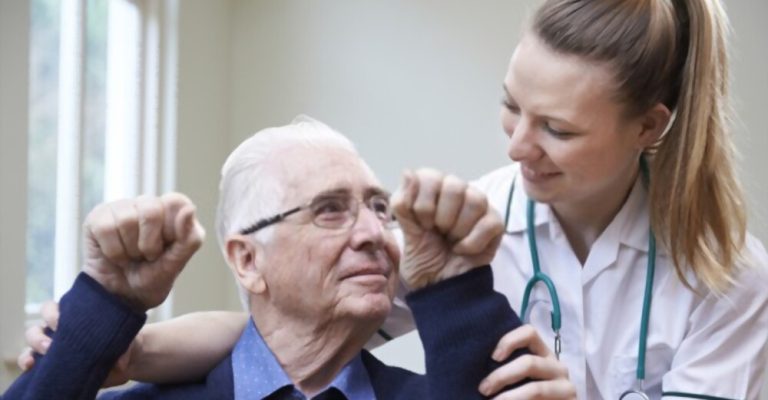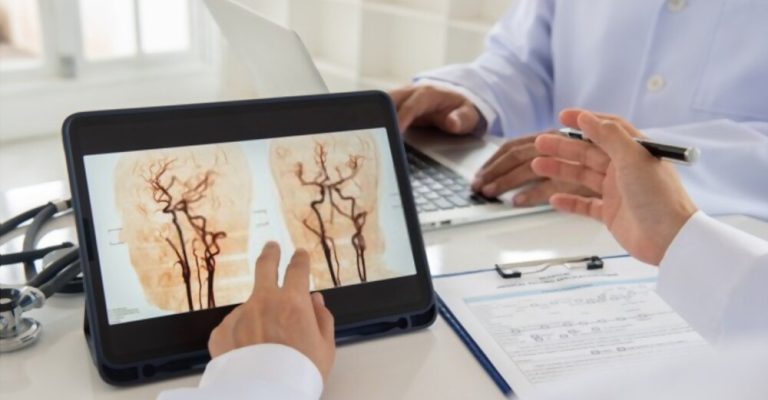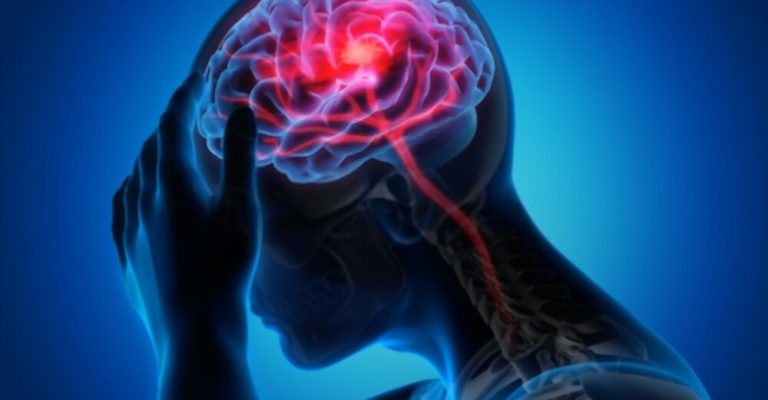
We often think of strokes as only happening in old age, but this is far from the truth. In reality, stroke can happen to anyone at any age, and understanding how to be prepared for a stroke—as well as its potential long-term effects—is essential.
However, few people know that almost two-thirds of those affected by a stroke are between the ages of 15 and 50; this means that young adults should be as aware of their risk factors as seniors do.
Whether you’ve experienced a chronic stroke or are simply curious about what it’s like living with one, it’s vital to learn more so we can have an open conversation about the prevention and recovery methods available.
Through exploring the symptoms associated with recurrent strokes, disabilities caused by them, and rehabilitation prospects, let’s unpack all there is to know about chronic strokes today!
If you’ve had a stroke and your symptoms have persisted for more than six months, you’re considered to be living with chronic stroke.
This type of stroke can lead to long-term physical and mental impairments and permanent disabilities. The effects of chronic strokes are usually devastating and can drastically reduce the quality of life.
Constant progress is being made in our collective knowledge of the brain and its functions. For a long time, it was believed that once a person reached adulthood, his or her brain stopped developing.
However, new data reveals that it may be possible to challenge and enhance the brain’s chronic stroke recovery months or even years after the initial stroke.
Depending on the severity of the stroke, the crucial period for motor recovery can stretch as long as 18 months, as revealed by the results of one large-scale research including 219 stroke patients.
In addition, a case study from past years demonstrated motor improvement in a stroke patient 23 years after the first event.

Many stroke survivors report that the initial three months after the event were the most productive. Stroke patients generally participate actively in various treatments during this time, either in an inpatient rehabilitation facility or at home.
In addition, a phenomenon known as spontaneous recovery often takes place during this period, when the brain reaches a profound sense of neuroplasticity.
The term “spontaneous recovery” describes the brain’s natural capacity to restore and make do with impaired but not damaged neural structures. So then, without any involvement on our part, maybe some things will start working again.
It is common for patients to fully recover from their stroke symptoms within the first six months of treatment.
Following this moment, patients often hit the very first recovery plateau after a stroke. After that, recovery might slow, but it will not halt until the patient quits engaging in therapy.
Recent studies have shown that plateaus may not always represent a perpetual state. There is hope for further improvement even in the latter chronic phases of stroke rehabilitation.
For this reason, you should not quit if you feel your progress has slowed or stopped. Instead, if you implement the appropriate measures, you can continue your road to recovery.

Within the chronic phase of stroke rehabilitation, stimulating the brain’s intrinsic neuroplasticity is the most effective strategy.
Neuroplasticity describes the brain’s capacity to change its structure in reaction to training. The brain can perform tasks originally performed by affected regions by shifting them to surrounding, unaffected regions.
Strong, repetitive practice of the ability you desire to develop is required to trigger neuroplasticity. For instance, if you want to strengthen your speech, you’ll need to devote a lot of time daily to speech therapy exercises.
Below we will outline some of the most effective therapeutic approaches for promoting neuroplasticity in the long-term aftermath of stroke:
A therapeutic technique known as “mental practice” is visualizing and mentally practicing an action. In other cases, the user will listen to a recording that thoroughly explains how to do a given activity. Particulars might contain not just what has to be done but also how it could feel.
As an alternative to using recorded sound, patients may engage in mental practice in a more casual setting by just visualizing the desired activity, complete with the required motions.
Like physical exercise, the mental practice may stimulate neuroplasticity. Passive range-of-motion therapy, which combines mental and physical exercise, helps stroke patients regain movement.
Even if a stroke has rendered you permanently immobile, you may still begin the reprogramming phase just by visualizing yourself carrying out the exercises.
Among the best methods to help stroke victims regain arm function who also suffer from hemiparesis (fibromyalgia on one side of the body) is via constraint-induced movement therapy.
Rehabilitating with constraints that prevent the unaffected side from moving is complex, and this is the case with constraint-induced movement therapy.
This demands utilizing the damaged side of one’s body. Patients recovering from a stroke will require some function on the impacted side to benefit from this treatment.
In addition, a full paralysis of the muscles necessitates employing techniques developed for those who have had a stroke.
There are generally 3 phases to constraint-induced movement therapy:
The term “mass practice” refers to any exercise involving a great deal of repetition and frequency. This encourages neuroplasticity, which in turn enhances motor control by jolting the brain into action.
Constraint-induced movement therapy has demonstrated remarkable success in trials of individuals with chronic stroke, with patients recovering considerable arm movement after just 10 weeks of treatment.
The use of home treatment gadgets may aid stroke rehabilitation. Stroke rehabilitation procedures are combined with features of video gaming in these gadgets. These mental games make treatment fun and effective.
Moreover, using home assistive devices, the typical patient completes 23 times as many repetitions as they would with conventional therapy.
The reason is that they’re intended to inspire gamers to keep pushing themselves to new personal bests. More exercise means greater neuroplasticity, which means less time spent recovering from stroke complications.
When it comes to improving muscular mobility following a recent stroke, electrical stimulation is another method that may help urge the brain to remodel itself.
The treatment is effective because an electrical current is sent along to the afflicted muscles. This promotes neuroplasticity by stimulating the brain.
The American Heart Association found that stroke survivors benefit most from electrical stimulation and physical therapy. Moreover, the advantages can be amplified by actively contracting your muscles in response to the electromagnetic pulse.
Although e-stim can be done at home, it is best to try it with the guidance of a therapist initially. They will instruct you on where to position the electrodes as well as how to use the device correctly.
Recovery from stroke-related impairments, such as impaired or nonexistent hand motions, may be aided by this treatment.
The mirror treatment technique is placing a mirror over the paralyzed limb while the healthy hand engages in hand rehabilitation activities.
Doing so stimulates the premotor cortex, the brain region responsible for controlling movement.
Simply said, mirror treatment stimulates neuroplasticity by fooling the brain into believing it controls the movement of the paralyzed hand. So it’s unlikely that the afflicted hand may start twitching or moving in some way. However, it may result in the future if it doesn’t happen right now.
However, this treatment works only with people with one strong side. There may be better options for treating stroke-related paralysis if it involves both sides of the body.
Video games are sometimes known as virtual reality. Depending on the goal of the therapy, the subject may wear a headset for a more immersive experience or engage in an activity on a screen for a less immersive option.
Clinics and private residences increasingly use virtual reality systems designed to strengthen and improve limb function. The player’s arms or legs can control games, and players can get quick feedback on their progress.
Evidence shows that virtual reality treatment may help persons with acute or chronic stroke regain motor function.
Although VR has been shown to enhance mobility results, it has also been shown to boost motivation, which may assist people with injuries or disabilities to utilize their afflicted side for longer during self-training.
In addition, studies have shown that chronic stroke survivors like and benefit from using video game-based self-training techniques.
A stroke may significantly impact vital functions, including mobility and speech. The brain has the capacity to heal itself even throughout the chronic stroke phases, even if recovery might seem delayed sometimes.
Patients need to put a lot of effort into treatment to recover. It can pave the road for your brain to repair the connections between its cells.
References:
https://www.ncbi.nlm.nih.gov/pmc/articles/PMC3006180/
https://www.ncbi.nlm.nih.gov/pmc/articles/PMC7911065/
https://www.ncbi.nlm.nih.gov/pmc/articles/PMC5020059/
https://www.sciencedirect.com/topics/psychology/spontaneous-recovery
https://www.physio-pedia.com/Mental_Practice_in_Stroke_Rehabilitation
https://www.ncbi.nlm.nih.gov/pmc/articles/PMC4106469/
https://www.ncbi.nlm.nih.gov/pmc/articles/PMC4361809/
https://www.ncbi.nlm.nih.gov/books/NBK310951/
https://www.ncbi.nlm.nih.gov/pmc/articles/PMC8131676/
https://www.ahajournals.org/doi/10.1161/01.str.0000149623.24906.63